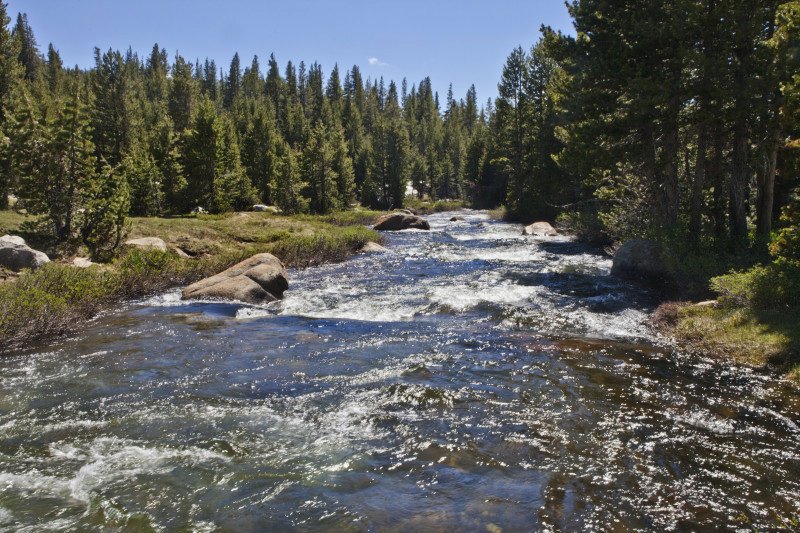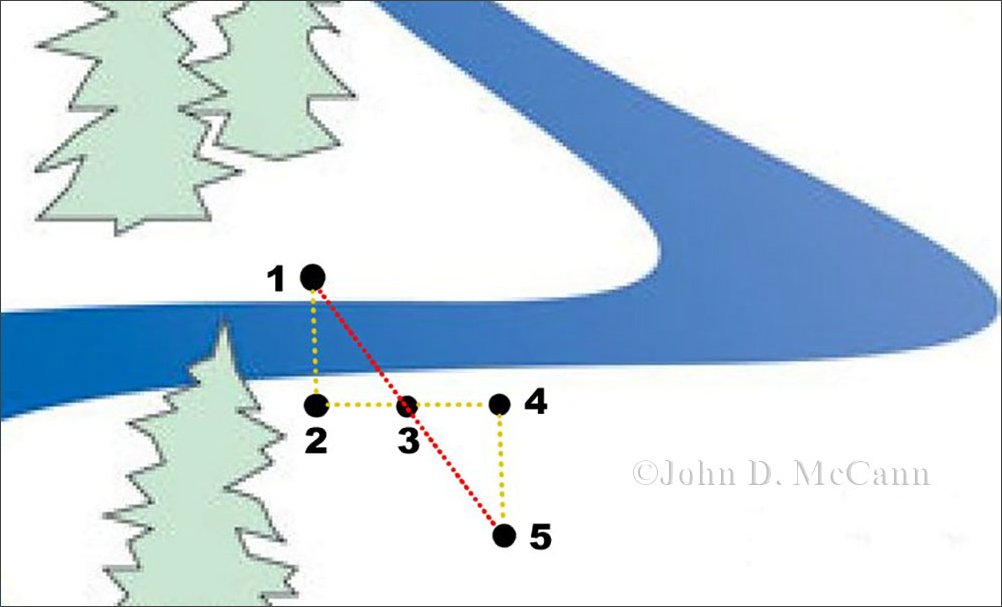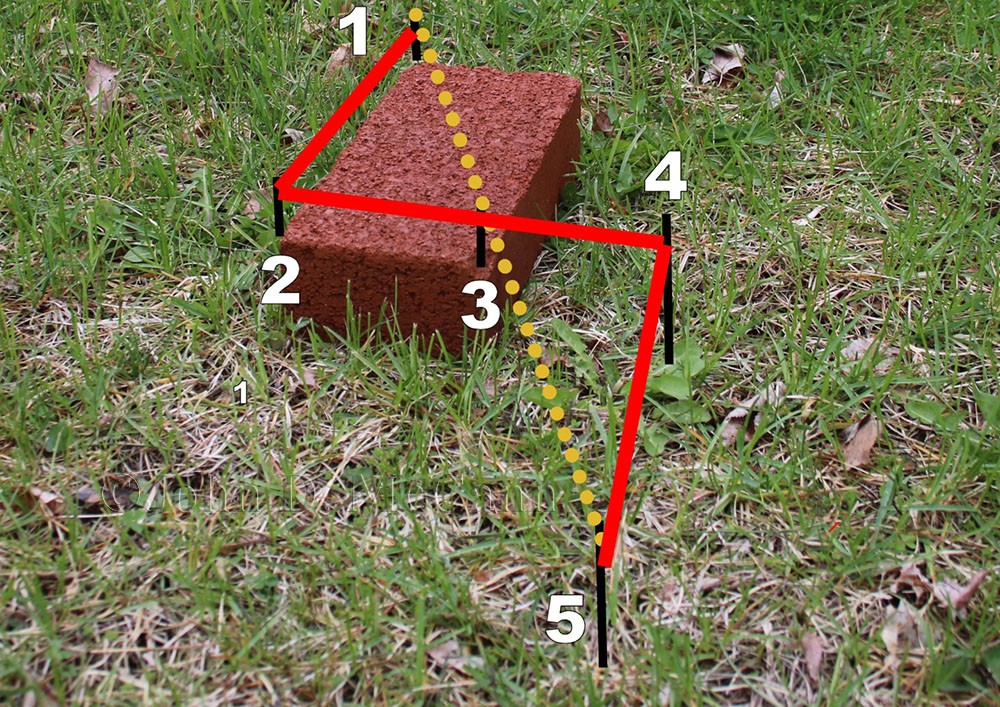- New Products
- Exclusive Gear
- Bushcraft Gear
- Containers
- Cooking
- Fire
- First Aid
- Food Gathering
- Knives & Tools
- Knife Collectors Corner
- Light
- Logo Gear
- Misc. Items
- Navigation
- Packs, Pouches & Bags
- Personal Care
- Repair Gear
- Shelter & Protection
- Signaling
- Urban Survival
- Water
- Writing Gear
- John's Books
- Bargain Bin
Measuring Width Without Tools
 Could you measure the width of this stream without tools and without getting wet?
Could you measure the width of this stream without tools and without getting wet?
Many years ago my father showed me a way to measure the width of something like a stream, without tools, and without getting wet. I thought I would share the technique so others could use it in the field.
Keep in mind that this technique does not give you exact measurements but provides you with a good idea of how wide a stream might be. So let’s get started.

Using the diagram above, you would be standing at point “2.” You would pick out a reference on the other side of the stream at the water’s edge, which is point “1.” This could be a tree, a boulder, a sapling, or even a tall weed. As long as you can maintain the identity of that point while you move around it will work.
You will now walk parallel to the stream so many paces. Let’s say we will use six paces. You will now mark that spot with a stick or something standing up so you can see it from a distance. This point on the diagram is point “3.”
You will now continue another six paces, staying in a straight line and parallel to the stream. When you reach the six paces, you will stop and turn 90° away from the stream. This is point “4.”
You will now walk inland until you reach a point where you can line up your position with points “1” and “3.” This is point “5.” The distance you traveled from point “4” to Point “5” will be the same distance as between points “1” and “2.” It is that easy.
To illustrate the point in a different manner I have used some bricks.

In the photo above you can see that the brick illustrates the width of the stream. By using the technique I have described above you can see that the distance between points “4” and “5” will be the same as between points “1” and “2.”

In the photo above I have added a second brick to verify the technique. We know that the two bricks are the same length. By placing the second brick in the picture it shows that the distance between points “1” and “2” is the same as between points “4” and “5.”
This shows that if you can count, and maintain the view of points “1” and “3” you can determine distance without tools.
It should also be noted, that it helps if you know your pace distance as it can tell you your distance travelled between points “4” and “5.” If you don’t know your actual pace, you can check out my article on pacing which teaches you how to determine your pace distance. You can check it out HERE.
Of course, this technique will only work on a stream or other object if you can move inland and maintain your view of points "1" and "3." However, it is another tool for your toolbox, and we can't have too many tools.
We hope you enjoyed this article and will help support our efforts by checking out our products. As always, Be Prepared To Survive!
Copyright © 2017 by John D. McCann


